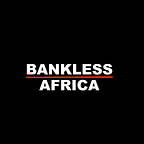The Rise of Stablecoins in Africa
Digital Dollars Create Financial Access With Less Risk
Stablecoins are cryptoassets which generally track the value of a specific fiat currency, such as the U.S. dollar, the Euro, or the South African rand, making stablecoins a subclass of synthetic assets. Stablecoins are hosted on one or more smart contract platforms, and are classified as tokens rather than blockchain-native coins. Of the many different types of stablecoins on the market, most are pegged to the U.S. dollar. Generally speaking, they can be categorized as centralized or decentralized, depending on how the stablecoins are collateralized.
While exchange-listed stablecoins are still subject to supply and demand, there are built-in stability mechanisms to ensure that the trading value of a stablecoin does not deviate too far from the valuation of the fiat currency to which it is pegged. Recent events have demonstrated that the design of these mechanisms is a critical factor in the longevity — dare we say the stability — of a stablecoin. Various types of stability mechanisms have their own advantages and disadvantages.
Read More at BanklessPublishing.com
Read more at BanklessPublishing.com
